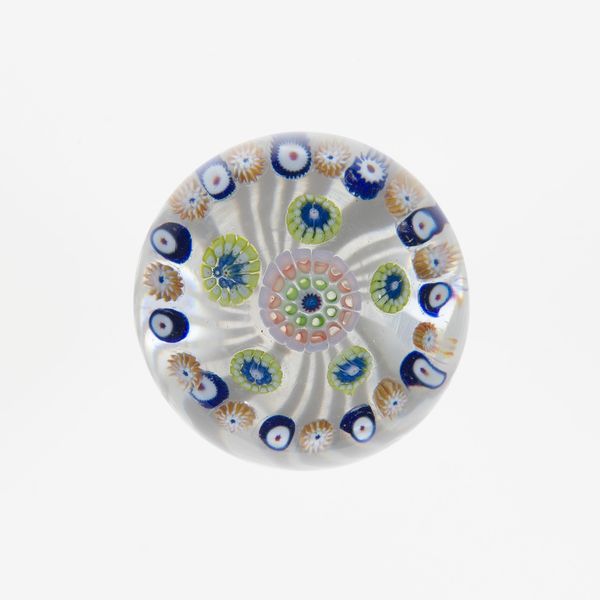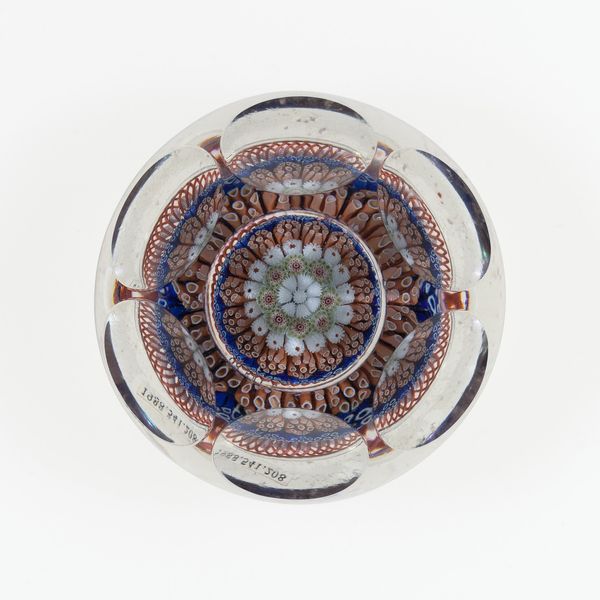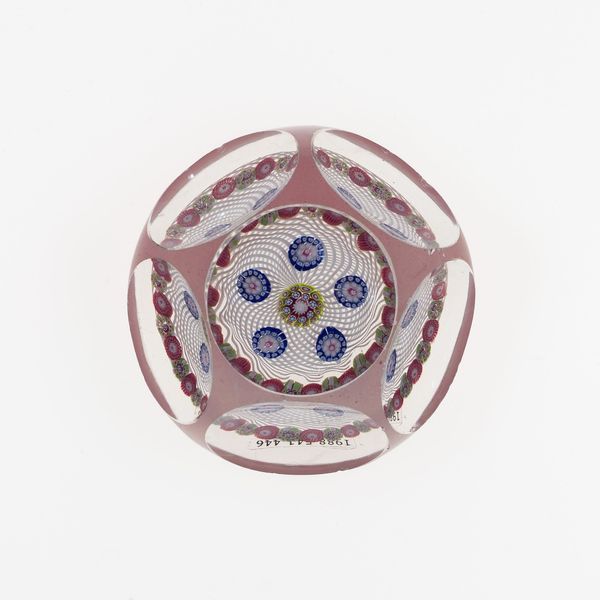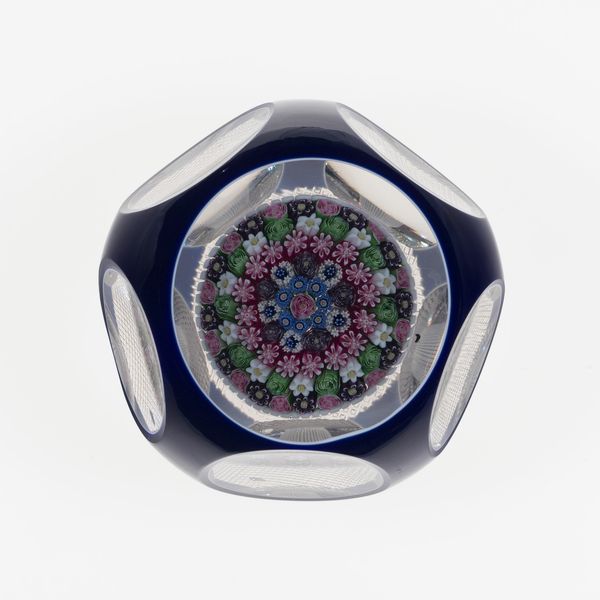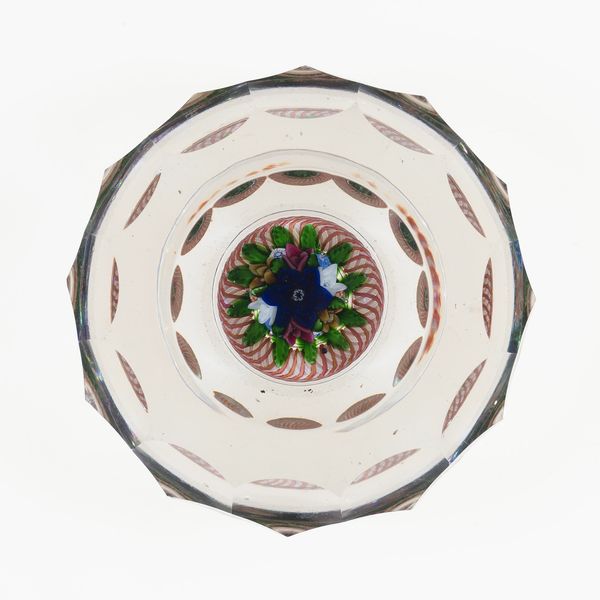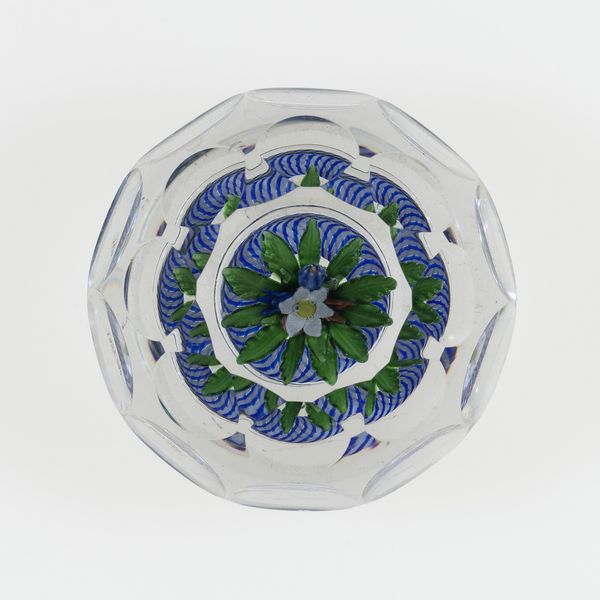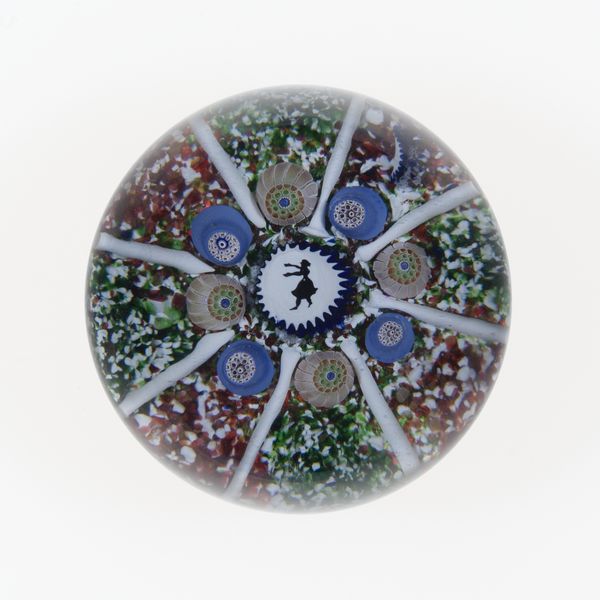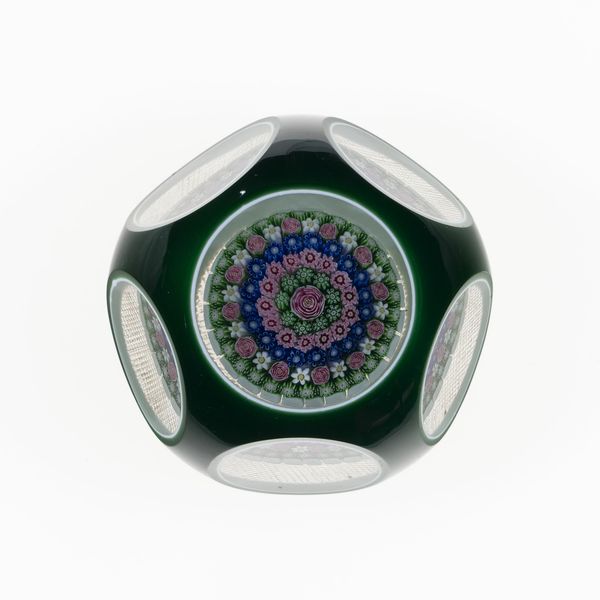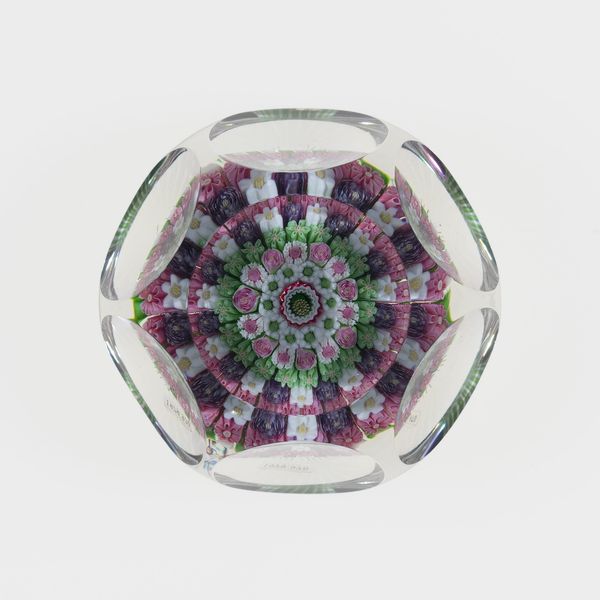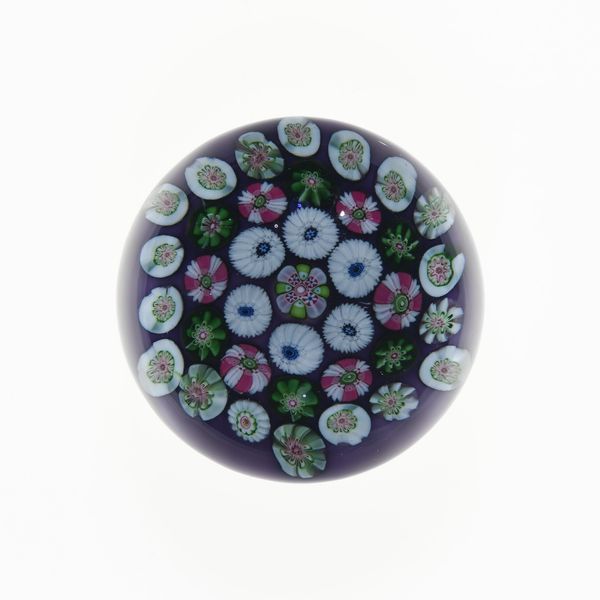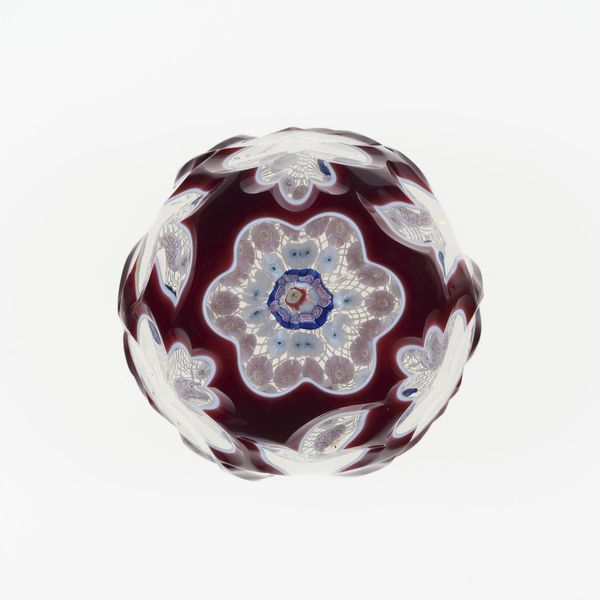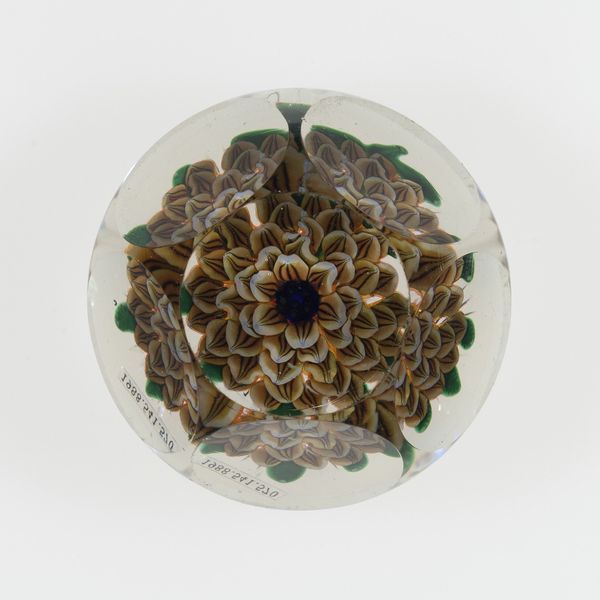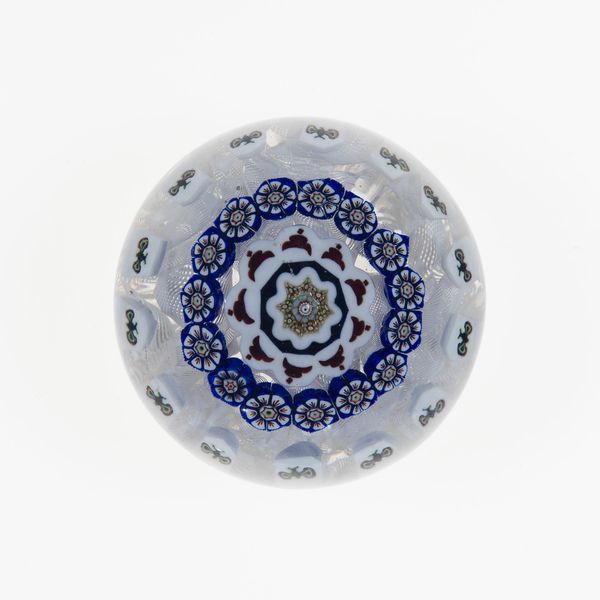
glass, sculpture
#
glass
#
sculpture
#
decorative-art
Dimensions: Diam. 7.7 cm (3 1/16 in.)
Copyright: Public Domain
Curator: Here we have a beautiful example of mid-19th century glasswork, a paperweight created by the Baccarat Glassworks around 1845 to 1860. The piece is currently held in the collection of The Art Institute of Chicago. Editor: It looks surprisingly cheerful. It is weighty, but has a miniature cosmos of flowers caught inside, all these light refractions dancing. Curator: Precisely. Observe the intentional placement of millefiori. It creates an intricate floral design, which presents an impressive control of color and form. Consider also the shape of the glass itself, note how its multifaceted dome distorts and amplifies the embedded motif, creating depth and luminosity. Editor: But that apparent sophistication masks the true value embedded in the crafting process and access. Each one made with meticulous techniques: complex molds, and labor that must have demanded specific conditions and skills. Who was it made for, and what are we meant to see through the decorative excess? Curator: What it presents is an intricate pattern that reflects notions of control and order through complex yet deliberate construction. The design leads your eye to the vortex in the center, so we understand the semiotic system employed here—symmetry equates beauty. Editor: Or the illusion of symmetry. Glass production depended then, and still does, on material extraction, energy input, global trade, and on often invisible or marginalized labor. What appears contained within this “perfect” form hides the networks required for it to exist at all. Curator: While I recognize the importance of those considerations, the aesthetic achievement—the interplay of light and color, the spatial organization—ultimately defines its artistic merit. Editor: Perhaps...and for me the enduring value here resides less in the object itself, and more in appreciating what it signifies within our own material realities and connections to its complex network.
Comments
No comments
Be the first to comment and join the conversation on the ultimate creative platform.
